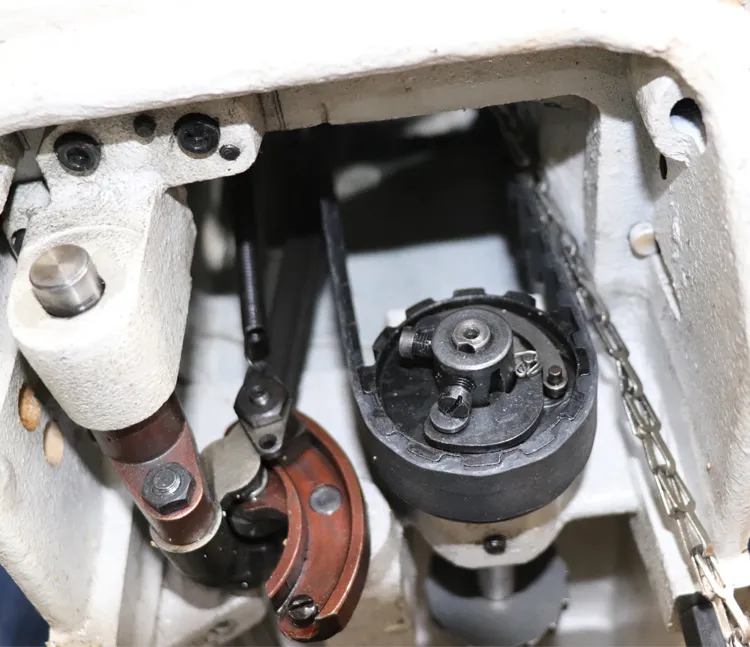Tips for Sewing Thick Fabrics Effectively and Easily
Sewing Heavy Fabrics Tips and Techniques for Success
Sewing heavy fabrics can be both a rewarding and challenging endeavor. Whether you're working with canvas, denim, leather, or upholstery fabrics, careful consideration and the right techniques are essential to creating beautiful, durable projects. In this article, we will explore various tips and techniques for successfully sewing heavy fabrics, ensuring that your sewing experience is as enjoyable as it is productive.
Understanding Heavy Fabrics
Heavy fabrics are typically defined as those that weigh more than medium-weight materials or have a thicker texture. Common types of heavy fabrics include denim, canvas, twill, corduroy, and leather. These materials can be used to create a variety of items, including bags, jackets, upholstery, and home decor. However, their thickness and density can pose challenges during the sewing process.
1. Choose the Right Tools
When sewing heavy fabrics, the right tools are crucial. Start with a heavy-duty sewing machine that can handle thick layers. Look for machines with a powerful motor and the ability to adjust tension settings. Heavy-duty needles, such as size 16 or 18, are recommended for penetrating thick fabrics without breaking. Additionally, consider using a walking foot or even-feed foot, which helps to guide multiple layers of fabric evenly through the machine.
2. Select Appropriate Thread
Choosing the right thread is also vital when working with heavy fabrics. Polyester or nylon thread is often recommended due to its strength and durability. Avoid cotton thread, which can weaken with stress and may not hold up well under heavy usage. For projects involving leather or other specialized materials, consider using threads designed specifically for those fabrics.
Accurate cutting is essential for achieving clean seams and a polished look in your finished project. When cutting heavy fabrics, use sharp scissors or a rotary cutter with a cutting mat. Avoid using dull blades, as they can result in frayed edges and uneven pieces. Mark your cutting lines with tailor’s chalk or a fabric-safe pen to ensure precision.
4. Pin and Baste Securely
sewing heavy fabric

Because heavy fabrics can shift easily, securing layers is essential. Use sturdy pins or clips to hold the fabric in place before sewing. Basting stitches, which are temporary and easily removed, can also be helpful for keeping pieces aligned. When basting, increase the stitch length to avoid leaving holes in the fabric.
5. Sew Slowly and Steadily
When sewing heavy fabrics, take your time. Speed can lead to mistakes and wonky seams. Set your sewing machine to a slower speed, which allows for greater control and smoother stitching. If you're encountering thick layers, don't hesitate to lift the presser foot and reposition the fabric to ensure even feeding.
6. Use a Stitching Technique That Suits the Fabric
Different heavy fabrics may require unique stitching techniques. For instance, when sewing denim, you might consider using a double stitch for added strength. With leather, be mindful of using a straight stitch, and consider applying a leather needle for clean perforations. Experiment with stitches on scrap pieces to find the best approach before committing to the final project.
7. Finish Edges Properly
Finishing the edges of heavy fabrics is crucial to prevent fraying and ensure durability. Techniques such as zigzag stitching, serging, or using bias tape can effectively finish raw edges. When working with leather, edge finishing techniques can also add a professional touch and improve the overall look of the project.
8. Consider Special Treatments
For certain projects, applying a specialized treatment can be beneficial. For instance, water-resistant sprays can help protect canvas or outdoor fabrics, while conditioners can maintain the suppleness of leather goods. Always test products on a small area first to ensure compatibility with your selected fabric.
Conclusion
Sewing heavy fabrics may seem intimidating at first, but with the right tools, techniques, and a little practice, anyone can master this craft. Embrace the durability and unique textures that heavy fabrics offer, and don’t be afraid to experiment with different projects. Whether you’re creating a sturdy bag, a stylish jacket, or a cozy upholstered chair, the satisfaction of working with heavy fabrics is well worth the effort. Happy sewing!
-
Heavy Duty Leather Sewing Machine: A Must-Have for Professional LeatherworkNewsMay.28,2025
-
Leather Sewing Machine: Essential for High-Quality LeathercraftNewsMay.28,2025
-
Extra Heavy Duty Sewing Machine for Premium Leather ApplicationsNewsMay.28,2025
-
Walking Foot Cylinder Arm Sewing Machine: Precision and Power CombinedNewsMay.28,2025
-
Industrial Cylinder Arm Sewing Machine: Engineered for High-Performance StitchingNewsMay.28,2025
-
Cylinder Bed Sewing Machine: A Powerful Solution for Precision StitchingNewsMay.28,2025
-
Zigzag Sewing MachineNewsMay.12,2025





























